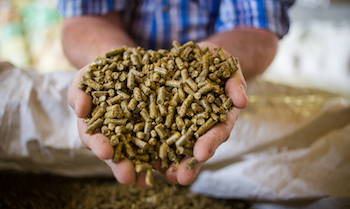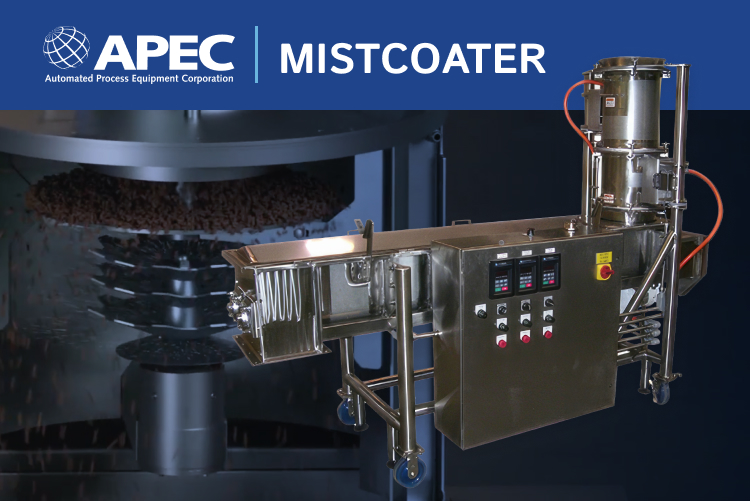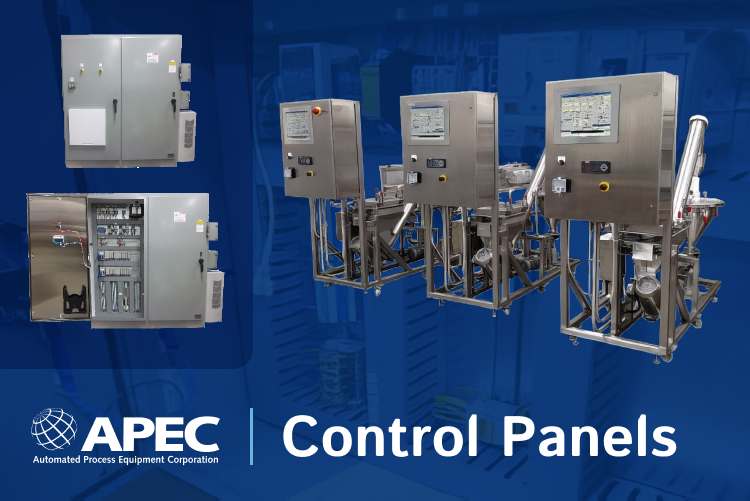
Animal feed pellet coating presents a number of challenges to feed manufacturers. The consistency and properties of the pellets, as well as the consistency and properties of the liquid or powder coating, can all create unique obstacles to adequate and uniform coating. The right pelleting and liquid coating system can help to solve these challenges, with the right considerations and applications.
Animal Feed Pellet Coating: Problems and Solutions
Animal feed pellet coating helps to supply farm animals and pets with essential vitamins and nutrients, or make the feed more appealing for them to eat. This can help them gain weight faster, produce more milk, or maintain their general health and wellness. However, some of these vitamins, minerals, oils or fats also present challenges in feed manufacturing. When the animal feed pelleting process and liquid coating processes work in tandem, these problems can be avoided in many cases.
Pellet Breakage
When pellets break apart during the mixing and coating process, it not only reduces product quality and increases waste, but also creates dust and powders, which increases maintenance costs and hazards. Some of this breakage occurs during the mixing and pelleting process, while additional breakage can occur during the coating and packaging processes.
Preventing pellet breakage starts with the pelleting process. With the right levels of moisture and air flow, as well as the right equipment, animal feed pellets will resist breakage. During the coating process, animal feed pellet breakage can occur as the pellets move through a mixer or conveyor. If the conveyor or mixer has pinch points, the pellets can get stuck and destroyed. If the mixing action is too strenuous, this can also destroy the pellets. This may not be a problem for small, compact, dense pellets, and may present more challenges for larger, more porous or friable pellets. In this case, using a paddle mixer, rotating drum, or rotating disk for liquid coating can help to reduce pellet breakage.
Pellet Porosity
Some liquid coatings and processes require pellets to be somewhat porous in order to stick. If the pellets are too dense, processes like vacuum coating, which encourages liquid coatings to stick to the pellet’s pores, will not be as effective. Taking a closer look at the pellet consistency and improving air flow during the pelleting process can help with pellet porosity.
If the pellet is not very porous, vacuum coating might not be the ideal solution. The liquid additives might be included into the mash prior to the pelleting process. However, this must be applied carefully, as it can change the density or formation of the pellet. In this case, another liquid coating method might be ideal, such as liquid coating using a mixer or conveyor.
Liquid Coating Clogging
Liquid coatings with high oil, fat, sugar or salt content have a tendency to clog spray nozzles. Record the characteristics of the liquid and consult with your equipment manufacturer beforehand to ensure the liquid can move through the spray nozzles effectively. If it’s unclear whether the liquid will quickly clog the spray nozzles, it’s best to test these liquids with spray nozzles before installing them, so you can prevent unnecessary maintenance costs later on.
If the liquid is likely to clog, consider types of liquid coating processes that bypass spray nozzles. A liquid coating system using a rotating disk mechanism, such as the Mistcoater, allows materials to fall freely while the liquid coating atomizes. This coats the material uniformly and also removes the need for spray nozzles.
Liquid Coating Retention
If the liquid coating doesn’t stick to the animal feed pellet or another material, it can dramatically reduce the nutritional content, fat content, or flavor profile. Vacuum coating is an effective way to increase liquid coating retention, as it draws the liquid into the pellet’s pores. This process also allows feed manufacturers to coat the pellet multiple times.
If vacuum coating isn’t a viable option, a combination of powder coating and liquid coating can help to improve retention. If the porosity of the pellet isn’t suitable for vacuum coating, a rotating drum can be used to adjust retention time. If the pellet is being coated through a screw conveyor or mixer, adjusting the mixing time or the fill level can allow the liquid to coat the pellets more effectively. Or, if the spray nozzles are clogging, the pellet won’t be coated evenly and won’t retain the liquid coating. This problem can be solved by using a rotating disk applicator.







